We came across the beautiful work of Lisa Solomon when we were researching our recent article highlighting contemporary textile art.
Working primarily through drawing and embroidery, Lisa imbues her artwork with brilliant colours, elegant lines and a highly distinctive style. But her work is as much about concept as it is about aesthetics; her inspiration and themes are rich and diverse. This is what makes her work so compelling.
In part one of our interview with the Lisa, she speaks passionately about the range of techniques she uses in the process of creation and how a multi-cultural upbringing has influenced her work.
![Lisa Soloman - Sen [1000 doilies], 2013, crochet doilies, pins, thread balls, dimensions variable [this configuration 75” x 120”](https://www.textileartist.org/wp-content/uploads/solomon_1.jpg)
A different way to make a mark
TextileArtist.org: What initially captured your imagination about textile art?
Lisa Solomon: I was in grad school when I started really using textiles… I say really because I did a lot of costume design when I was an undergrad and that definitely influenced me. I also did a lot of paintings on top of dressmaking patterns before I really started using anything that would qualify as textile in my artwork.
Initially I just really wanted to learn how to embroider. To learn stitches. As I learned to embroider it felt to me like it was just like drawing. It was simply a different way to make a mark and it felt very meaningful to me.
Crocheting also just made sense to me… in the beginning I loved the idea of taking something semi-dimensional like a doily and flattening it by drawing it – ultimately re-animating it by stitching over part of it and making it 3D again…
I think textiles also seemed like an “underdog” in “fine art”… And I like underdogs. I also loved all the implications of using textiles in the work. They come loaded with their own history and connotations – and it felt exciting and different than say the history of painting or ceramics.
![Lisa Soloman - Sen [1000 doilies - detail], 2013, crochet doilies, pins, thread balls, dimensions variable [this configuration 75” x 120”](https://www.textileartist.org/wp-content/uploads/solomon_2.jpg)
Blending cultures
What or who were your early influences and how has your life/upbringing influenced your work?
My grandmother on my dad’s side was a HUGE influence. She was always knitting, crocheting and embroidering when I was growing up. I have so many things that she made for me that I treasure to this day. My mother has also been an influence. She quietly was very DIY in my childhood – making costumes, helping me with science projects and book reports and any drawing desires.
My grandmother and my mother taught me how to crochet (although I forgot and had to relearn again at a later date), and I’m positive that seeing them making things constantly helped shape who I am today.
In terms of life/upbringing my heritage and is definitely influential. My mother is Japanese (from a small town) – my father is Caucasian. This state of being “in-between” has really become the crux of my work. As a child cultures were continually blended in my house and in my work I am always blending concepts and materials. I feel “at home” in a state of hybridization, and continually talk about how I hybridize materials/meanings in my work.
![Lisa Soloman - Template drawing for Sen, 2013, acrylic, embroidery, thread, bobbins on Duralar, 43”x43” [paper size]](https://www.textileartist.org/wp-content/uploads/solomon_3.jpg)
Permission to call myself an artist
What was your route to becoming an artist?
Oh I went the boring traditional route ;). Formal training all the way. I majored in art as an undergrad at UC Berkeley and then went to grad school (after 5 years) at Mills College. I don’t at all think that formal training is necessary to be an artist, but it definitely helped me figure out what I wanted to make and how I wanted to make it. It also forced me to learn how to talk about my work in a somewhat coherent manner. Getting my MFA school was ultimately what gave me “permission” to call myself an artist – as my profession. This may seem trivial, but at the time it was a big step.
What is your chosen medium and what are your techniques ?
I’m always at a loss to answer this question in a short and concise manner. I feel I’m a “by any means necessary artist”. This means I come up with an idea – I research said idea and then I make a body of work. The work can consist of small pieces or wall/room sized installation.
I think most of my work is rooted in drawing. I use a lot of vellum drawing on both sides and embroidering on both sides. Most of the time there is some element of thread/embroidery because I love how threads dangle and reveal process. I’m sort of a control freak in my work and I can’t control the thread and I love that. Thread is also dimensional drawing – which is attractive to me. I like felt very much so it pops up in the work.
I also use a lot of doilies. I love how beautiful they are. I love that I’m contemporizing something that most people relate to grandmothers. I like to shift scales a lot – so I make things that are usually small big, or big things small… I also flip relationships a lot. I make things that are ugly, scary, and hurtful pretty and delicate. I also often explore my own history – things in Japanese culture particularly that I find interesting/compelling. Lately I’ve been thinking a lot about colour.
![Lisa Soloman - Sanjusangendo crowns [gold], 2013, colored pencil and embroidery on Duralar, 28" x 28" [paper size]](https://www.textileartist.org/wp-content/uploads/solomon_4.jpg)
Any sort of message
How would you describe your work and where do you think it fits within the sphere of contemporary art?
Hmmm. What is my elevator speech for what my work is about? I’m a mixed media artist whose work revolves around domesticity, the line between Art and Craft, personal histories, a profound interest in colour, and uncovering the profound in the immediacy of the everyday that surrounds us. I’m interested in materiality, repetition (mediation vs. complexity) and how a swarm/multitude can alter our relationship to something in both positive and negative ways. I’m fascinated by the act of labor itself (which is often linked to work ethic), and I’m drawn to fixing or making beautiful things/events that frighten me or are out of my control. I see my art practice as an experiment. My studio and the world I interact with is my laboratory in which I conduct research and pose questions.
In the sphere of contemporary art – I can only hope that I fit in somewhere :). I bet arguments could be made that I’m aligned with a contemporary craft movement, with nods to minimalism and feminist agendas. In many ways I feel like contemporary art is now a free for all; to me the most compelling work comes from a personal space and is capable of expressing a message – ANY sort of message – from the love of the colour red to a political statement about corporatocracy. I like work that is beautiful for beauty’s sake, that is conceptual, that is witty, that is smart, sly, emotional, and I can only hope that my work functions on that level for some people some of the time.
![Lisa Soloman - Sanjusangendo crowns [gold - detail], 2013, colored pencil and embroidery on Duralar, 28" x 28" [paper size]](https://www.textileartist.org/wp-content/uploads/solomon_5.jpg)
A place for play
Tell us a bit about your process and what environment you like to work in?
I tend to work on small bodies of work – fluttering from one idea to another – working through the idea until I feel finished with it. Something sparks my interest and then I start researching. I like gathering data and images and facts and incorporating them into the work. Usually there is some really ridiculous amount of busy work in the work too. Something that I just have to repeat over and over to get the piece done (like thousands of french knots, or cross stitches, or a motif repeated multiple times).
Everything seems to be rooted in drawing. And I tend to like to keep something going on the side – a place for “play” so that new ideas and happy accidents can work their way into the studio. I think a lot about colour and placement – I tend to make tests and tape things up, or generate a strip of paper with every single red media that I have (pen, pencil, paint, ink) to find the right red to use.
My studio is a building that we built in my backyard. When I was pregnant with my daughter, my grandmother informed me that she wanted to talk to me (she had terminal lung cancer). She informed me that she was leaving me some money in her will – and that I could use it for ANYTHING that I wanted, but that since I was pregnant and my life was about to change, she was going to strongly recommend that I use it to build a studio in my backyard. She wanted me to have the means to continue making my art while being a mother and she thought it’d be easier for me if my studio was quite literally closer to home. Who was I to deny her? And boy was she ever right. Having my studio in the back has definitely been a Godsend and it’s amazing that I have such a great space to work in. My architect friend John Riordan helped design it – it has filtered natural light (my favourite), and long clean white walls for me to put things up – and a loft for storage. I’m so incredibly grateful for my space.

Part two of our interview with Lisa is coming soon. In the meantime, to find out more, visit LisaSolomon.com.
![Contemporary textile artist Lisa Soloman featured image||Lisa Soloman - Sen [1000 doilies]](https://www.textileartist.org/wp-content/uploads/Lisa.jpg)
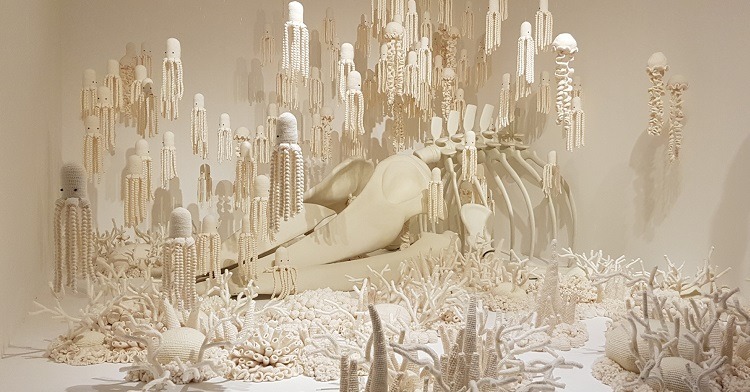
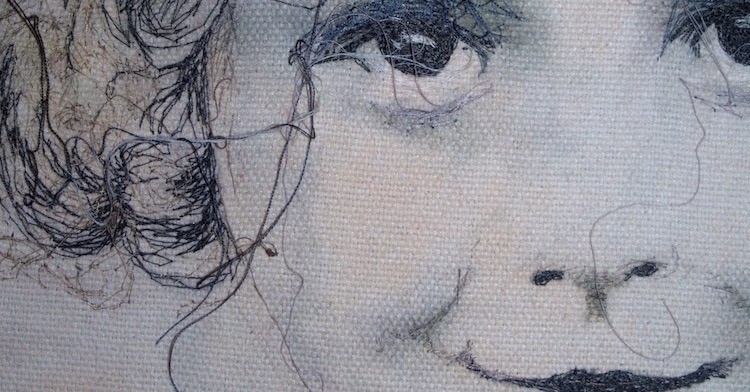
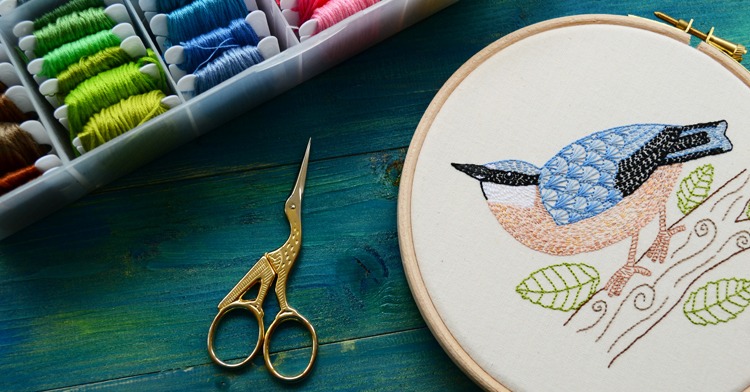
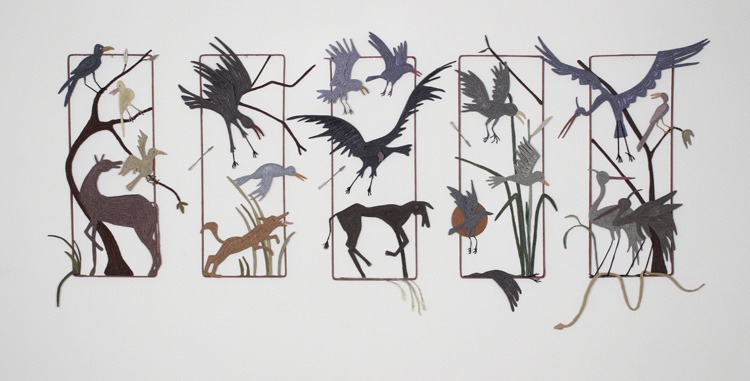


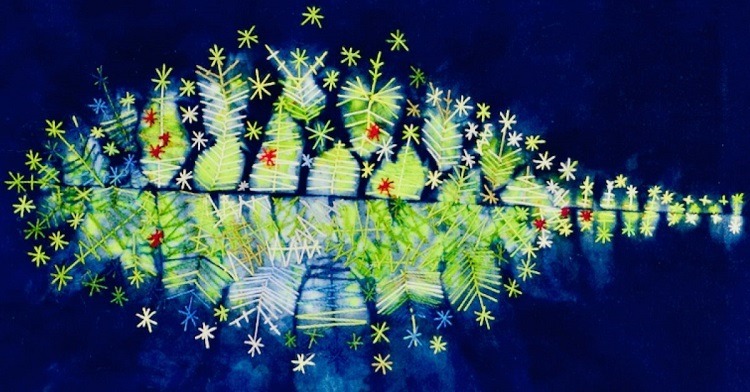
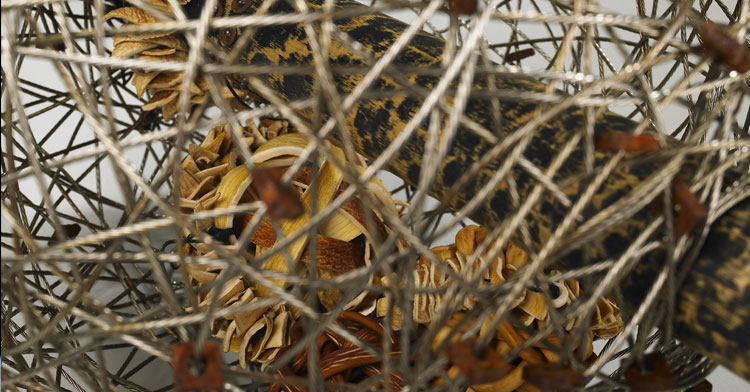
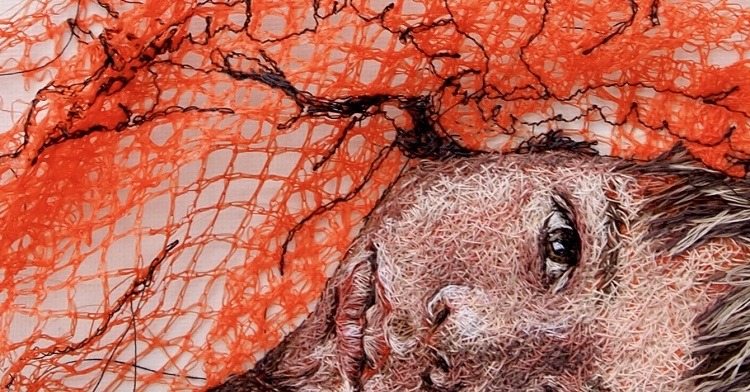
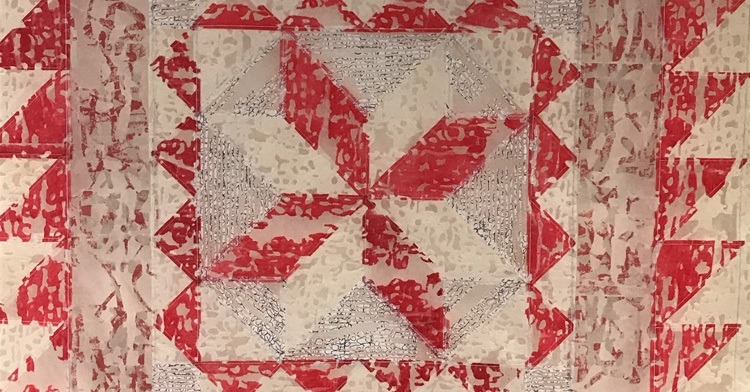
Comments